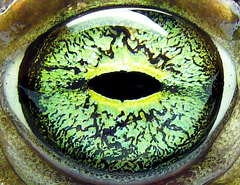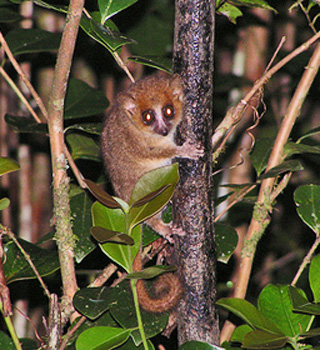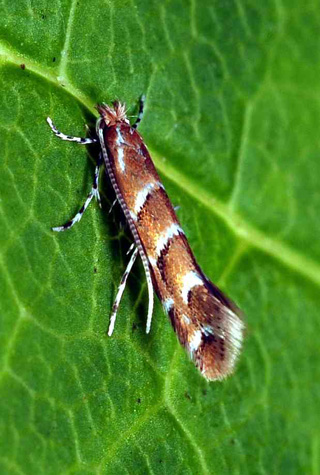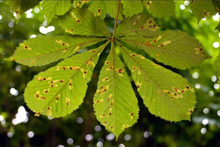Navigation
Cool Tools Let Public Upload Images, Information to Massive Interactive Online Biodiversity Encyclopedia
More than 150,000 species pages populated with expert-verified text and images are now available on the Encyclopedia of Life (EOL) at EOL.org. The EOL is a fast-growing inventory expected to shed new light on everything from conservation strategies for endangered species to climate change and the movements of disease-bearing or invasive pests.
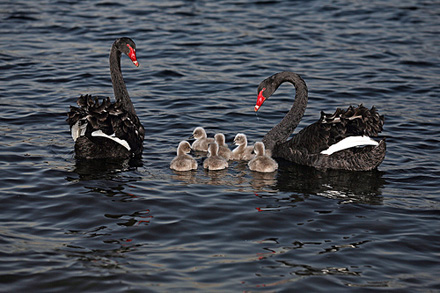 |
| Black swans,Cygnus atratus, Photographed at Lake Okareka, New Zealand. Photo by Rosie Perera Flickr |
More than 150,000 species pages populated with expert-verified text and images are now available on the Encyclopedia of Life (EOL) at EOL.org. The EOL is a fast-growing inventory expected to shed new light on everything from conservation strategies for endangered species to climate change and the movements of disease-bearing or invasive pests.
Over 30,000 still images and video, as well as local information about changing biodiversity, have been uploaded to the Encyclopedia of Life via new tools that let the public contribute to a global online science collaboration of unprecedented scale.
EOL accounts are freely available and registered users can add comments or observations to a page or tag a species and search for its relatives. Information submitted by the public, as well as images (via the photo sharing site Flickr, appear with a yellow background until authenticated by experts. Almost 40% of the 31,000 images so far have come from five photographers - from Portugal, Australia (2), Spain and Austria. The best of them, including winners of regular EOL photo contests, are showcased at http://www.flickr.com/groups/1056008@N20. Among other newly-added interactive features: an online widget that automatically inserts links to EOL species pages into a digitized document. EOL's "NameLink" tool identifies species names in a document and inserts an icon next to each that will take the reader to the relevant EOL species page. In order to better serve non-English speaking users, EOL partners are creating regional versions, with information and digitized literature in local languages. The first regional EOLs with a focus on local plants, animals and microorganisms have been initiated in the Netherlands, Australia and China, with discussions underway in Central America, the Arab world, Indonesia and South Africa.
The John D. and Catherine T. MacArthur Foundation, one of the project's earliest supporters, announced on August 23, 2009 that it is contributing an additional grant of $10 million. "Creating a single portal to access a web page for each of the 1.8 million known species will provide a powerful tool to assist researchers and policymakers in better understanding biodiversity and discerning patterns of plant and animal behavior," says Arthur Sussman, MacArthur Vice President. "By integrating and consolidating information on species, EOL also has the potential to accelerate scientific discovery and serve as an infrastructure for life sciences research."
The latest species page was published to mark the 25th anniversary of an invasive moth, Cameraria ohridella (see http://eol.org/pages/306084) in Macedonia from the Balkans. It describes the moth which devastates the white-flowering ornamental horse chestnut trees popular in parks and gardens throughout Europe, leaving their leaves brown by midsummer.
Though the damage to leaves does not kill the tree, the moths' dramatically quick migration through Europe is touching off alarms in North America and Asia, where the insect could easily thrive once introduced. Experts say the moth may also be evolving, in some places now infesting sycamore as well as horse chestnut trees. "Like the opening of Pandora's box, this moth, first discovered in Macedonia in 1984, has spread like wildfire after a probable accidental release near Vienna in 1989," says page author and curator David Lees of the Natural History Museum, London and INRA, Paris. "It is now more or less throughout Europe and poses a threat to ecosystems in Southeast Asia, North America and elsewhere - wherever the beautiful horse chestnut trees occur." "An important ornamental tree is being devastated, one all too obvious in parks at this time of year," says Dr. Lees. Like the "most wanted" posters in post offices, EOL will facilitate public recognition and awareness of such invasive species through detailed descriptions and maps, helping to slow their global spread and enable more rapid and effective remedial measures. It is also expected to help map the present locations and movements of human disease vectors such as crows and mosquitoes and the shifting ranges of species due to climate change. Unraveling secrets of long life Scientists are equipping EOL for use in finding patterns within biodiversity lifespan and other life history data that could help explain, for example, why certain species, even those within the same family, live longer than others, opening promising new avenues of research into human aging. Holly Miller, who leads the biology of aging portal at the Marine Biological Laboratory, Woods Hole, Massachusetts, says work is underway to relate EOL species information to medically relevant concepts - eventually allowing researchers to cluster and extract valuable aging-related insights. "Most species have not been studied in a medically-relevant way," Dr. Miller says. "EOL is simplifying such research by creating a handy reference for the scientific and common names of species, body size, age of reproduction, habitat, geographic location and temperature and more, all of which could be relevant to unraveling longevity's secrets." Funded by the Ellison Medical Foundation, the effort will dramatically expand the number and kinds of organisms traditionally examined in aging research. The benefit of using diverse species for such research can be seen in a recent report that certain butterflies that feed on fruit live longer than related species, leading to new investigations into the role played by genes, amino acids and food sources in the aging process. Meanwhile, the lifespan of a Latin American bat (Tadarida brasiliensis, www.eol.org/pages/327954), curiously long compared to mice relatives of a similar size, may be the result of its body's ability to maintain a more stable physiological condition that mitigates cellular protein damage (see report at www.fasebj.org/cgi/content/abstract/23/7/2317). Background The EOL Steering Committee is comprised of senior authorities from Harvard University, Smithsonian Institution, the Field Museum of Chicago, the Marine Biological Laboratory at Woods Hole, the Biodiversity Heritage Library consortium, the Missouri Botanical Garden, and the MacArthur and Sloan Foundations. James Hanken, Director of the Harvard Museum of Comparative Zoology and chair of the EOL Steering Committee said, "The Encyclopedia of Life is one of the most vital and ambitious human endeavors ever undertaken. By enabling researchers from around the world to communicate and share research data, the EOL will make a lasting contribution to our fundamental understanding of life on earth."
The EOL Institutional Council contains more than 25 institutions from around the world and provides EOL with global perspectives and outreach capabilities. The Distinguished Advisory Board consists of 13 global leaders from the scientific and policy communities. |
The information in this article was provided by EOL for release on August 23, 2009.
Search
Latest articles
Agriculture
- World Water Week: Healthy ecosystems essential to human health: from coronavirus to malnutrition Online session Wednesday 24 August 17:00-18:20
- World Water Week: Healthy ecosystems essential to human health: from coronavirus to malnutrition Online session Wednesday 24 August 17:00-18:20
Air Pollution
- "Water and Sanitation-Related Diseases and the Changing Environment: Challenges, Interventions, and Preventive Measures" Volume 2 Is Now Available
- Global Innovation Exchange Co-Created by Horizon International, USAID, Bill and Melinda Gates Foundation and Others
Biodiversity
- World Water Week: Healthy ecosystems essential to human health: from coronavirus to malnutrition Online session Wednesday 24 August 17:00-18:20
- Mangrove Action Project Collaborates to Restore and Preserve Mangrove Ecosystems
Desertification
- World Water Week: Healthy ecosystems essential to human health: from coronavirus to malnutrition Online session Wednesday 24 August 17:00-18:20
- UN Food Systems Summit Receives Over 1,200 Ideas to Help Meet Sustainable Development Goals
Endangered Species
- Mangrove Action Project Collaborates to Restore and Preserve Mangrove Ecosystems
- Coral Research in Palau offers a “Glimmer of Hope”
Energy
- Global Innovation Exchange Co-Created by Horizon International, USAID, Bill and Melinda Gates Foundation and Others
- Wildlife Preservation in Southeast Nova Scotia
Exhibits
- Global Innovation Exchange Co-Created by Horizon International, USAID, Bill and Melinda Gates Foundation and Others
- Coral Reefs
Forests
- NASA Satellites Reveal Major Shifts in Global Freshwater Updated June 2020
- Global Innovation Exchange Co-Created by Horizon International, USAID, Bill and Melinda Gates Foundation and Others
Global Climate Change
- World Water Week: Healthy ecosystems essential to human health: from coronavirus to malnutrition Online session Wednesday 24 August 17:00-18:20
- Mangrove Action Project Collaborates to Restore and Preserve Mangrove Ecosystems
Global Health
- World Water Week: Healthy ecosystems essential to human health: from coronavirus to malnutrition Online session Wednesday 24 August 17:00-18:20
- More than 400 schoolgirls, family and teachers rescued from Afghanistan by small coalition
Industry
- "Water and Sanitation-Related Diseases and the Changing Environment: Challenges, Interventions, and Preventive Measures" Volume 2 Is Now Available
- Global Innovation Exchange Co-Created by Horizon International, USAID, Bill and Melinda Gates Foundation and Others
Natural Disaster Relief
- STOP ATTACKS ON HEALTH CARE IN UKRAINE
- Global Innovation Exchange Co-Created by Horizon International, USAID, Bill and Melinda Gates Foundation and Others
News and Special Reports
- World Water Week: Healthy ecosystems essential to human health: from coronavirus to malnutrition Online session Wednesday 24 August 17:00-18:20
- STOP ATTACKS ON HEALTH CARE IN UKRAINE
Oceans, Coral Reefs
- World Water Week: Healthy ecosystems essential to human health: from coronavirus to malnutrition Online session Wednesday 24 August 17:00-18:20
- Mangrove Action Project Collaborates to Restore and Preserve Mangrove Ecosystems
Pollution
- Zakaria Ouedraogo of Burkina Faso Produces Film “Nzoue Fiyen: Water Not Drinkable”
- "Water and Sanitation-Related Diseases and the Changing Environment: Challenges, Interventions, and Preventive Measures" Volume 2 Is Now Available
Population
- "Water and Sanitation-Related Diseases and the Changing Environment: Challenges, Interventions, and Preventive Measures" Volume 2 Is Now Available
- "Water and Sanitation-Related Diseases and the Changing Environment: Challenges, Interventions, and Preventive Measures" Volume 2 Is Now Available
Public Health
- World Water Week: Healthy ecosystems essential to human health: from coronavirus to malnutrition Online session Wednesday 24 August 17:00-18:20
- STOP ATTACKS ON HEALTH CARE IN UKRAINE
Rivers
- World Water Week: Healthy ecosystems essential to human health: from coronavirus to malnutrition Online session Wednesday 24 August 17:00-18:20
- Mangrove Action Project Collaborates to Restore and Preserve Mangrove Ecosystems
Sanitation
- World Water Week: Healthy ecosystems essential to human health: from coronavirus to malnutrition Online session Wednesday 24 August 17:00-18:20
- Promoting the Development of Rural Water Supply and Sanitation -Case from Zhejiang Province, China
Toxic Chemicals
- "Water and Sanitation-Related Diseases and the Changing Environment: Challenges, Interventions, and Preventive Measures" Volume 2 Is Now Available
- Actions to Prevent Polluted Drinking Water in the United States
Transportation
- "Water and Sanitation-Related Diseases and the Changing Environment: Challenges, Interventions, and Preventive Measures" Volume 2 Is Now Available
- Urbanization Provides Opportunities for Transition to a Green Economy, Says New Report
Waste Management
- Promoting the Development of Rural Water Supply and Sanitation -Case from Zhejiang Province, China
- "Water and Sanitation-Related Diseases and the Changing Environment: Challenges, Interventions, and Preventive Measures" Volume 2 Is Now Available
Water
- World Water Week: Healthy ecosystems essential to human health: from coronavirus to malnutrition Online session Wednesday 24 August 17:00-18:20
- UN Food Systems Summit Receives Over 1,200 Ideas to Help Meet Sustainable Development Goals
Water and Sanitation
- World Water Week: Healthy ecosystems essential to human health: from coronavirus to malnutrition Online session Wednesday 24 August 17:00-18:20
- Mangrove Action Project Collaborates to Restore and Preserve Mangrove Ecosystems

